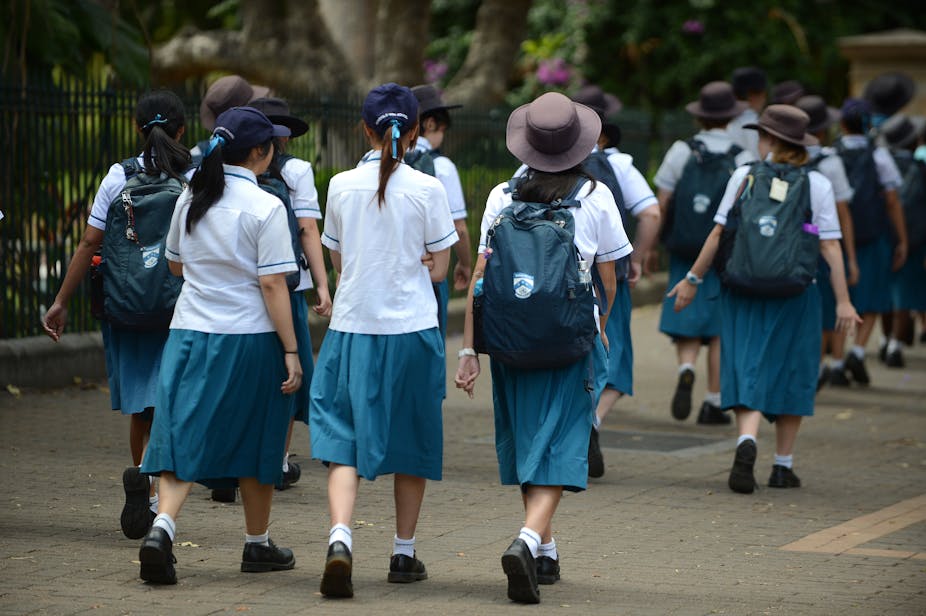Announcing his review into the national curriculum late last week, education minister Christopher Pyne said that the government fears it has a partisan leaning towards leftist politics and doesn’t recognise “the legacy of Western civilisation”.
In one respect Pyne is right. There is not much about conservative politics in the new history curriculum. In fact, if you look closely, there is very little party-political history in the curriculum at all. This is because it was designed to be that way. Party politics is only one small part of the broad spectrum of the development of democracy in Australia and other places in the world. It is also the bit that students find the least interesting.
Recent research tells us something politicians don’t want to hear: kids don’t like political history. It turns them off studying any sort of Australian history at all.
What the research says
In 2007, Anna Clark asked 182 students from 34 Australian high schools what they thought about Australian history and their responses were overwhelmingly negative. Clark’s survey confirmed what classroom teachers have known for a long time: most teenagers are not interested in politics.
Federation is a topic they love to hate. They find it mind-blowingly dull. One student complained:
I don’t find governments being formed in 1900 exciting.
Another said she would rather watch paint dry.
Also on the hate-list is the Westminster system, the development of the Liberal Party, Menzies (and prime ministers in general), and the rise of trade unions. To kids, the details are boring.
Clark warned of a possible long term negative effect. The students’ apparent refusal “to connect with [Australian] history may impede their connection with the nation itself”.
As a member of the first team of writers on the national history curriculum in 2009, I can attest to the fact that Clark’s survey – as well as current national and international research on historical thinking – had a major impact on the choice of topics for the new history curriculum.
Contrary to Pyne and his reviewer Kevin Donnelly’s “reds-under-the-beds” scare campaign about the leftist design of the history curriculum, the curriculum was written collaboratively by consulting hundreds of practising classroom teachers, academic history educators, historians, curriculum experts and parents from around Australia. Opinions were sought from progressives and conservatives alike.
Topics were carefully selected in order to engage students in meaningful learning at the various stages of their cognitive development. In Pyne’s words, the curriculum writers put “Students First”. Ideology was not a consideration.
What’s in the history curriculum?
If you look at the curriculum document, you will see that students are eased into learning about Australia’s political system at key stages in their cognitive development.
Contrary to what Pyne and Donnelly have repeatedly claimed in the media, Year 6 students study the Magna Carta, federalism, constitutional monarchy, the Westminster system, the structure and powers of the Australian parliament and how our laws are made.
But to make it more palatable to 12 year-olds, they also examine the social side of democracy and citizenship through the stories of key people and events that led to federation, and the experiences of men, women and children, indigenous people and migrants.
In Year 9, in “The Making of the Modern World, 1750-1918”, students do examine “the legacy of Western Civilisation” by looking at “Classical models and theories on the invention of democratic values” and the French and American revolutions. They also learn about the wider themes of “the nature of significant economic, social and political issues”, including nationalism, beliefs in social and political equity, “including the right to vote, egalitarianism and universal education in Australia”.
In Year 10, students investigate struggles for human rights, and how they have been ignored, demanded or achieved in Australia. Contextualising these movements within a broader chronological context of world history helps students understand the contribution of all political parties to the development of democratic values in Australian society today.
When the 2014 school year begins, and politicians and pundits continue to argue about the ideological content of the history curriculum, thousands of teachers around Australia will launch into the new history curriculum with fresh enthusiasm. Some states have been teaching it since 2012. In NSW it will be introduced in Years 7 and 9, then Years 8 and 10 in 2015.
If Pyne and Donnelly plan to revise the national history curriculum by adding more party-political topics, then it may just turn kids off studying Australian history altogether.

